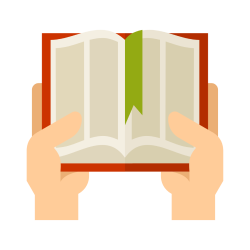
Suru Verbs
Suru Verbs
する suru is a verb that means to do, but it can be used with a variety of words. For example:
1. 弟は毎日コンピューターゲームをしています。
Otōto wa mainichi konpyūtā gēmu o shite imasu.
My younger brother plays computer games every day.
2. よくテニスと水泳をします。
Yoku tenisu to suiei o shimasu.
I often play tennis and swim.
3. 私はてんぷらにします。
Watashi wa tenpura ni shimasu.
I’ll have tempura.
4. 父は弁護士をしています。
Chichi wa bengoshi o shite imasu.
My father is a lawyer.
5. いい匂いがしますね。
Ii nioi ga shimasu ne.
It smells good, doesn’t it?
6. この椅子はグラグラしています。
Kono isu wa guragura shite imasu.
This chair wiggles.
7. 部屋をきれいにしてください。
Heya o kirei ni shite kudasai.
Please make your room clean (and neat).
8. この靴は3万円しました。
Kono kutsu wa 30,000 en shimashita.
This pair of shoes cost 30,000 yen
However, する suru also directly follows a noun that has a verb-like meaning. For example,
it can follow Chinese compounds or words borrowed from English. In many cases, the particle を o can optionally intervene between these words and する suru:
• 掃除(を)する sōji (o) suru (to clean)
• 勉強(を)する benkyō (o) suru (to study)
• コピー(を)する kopī (o) suru (to make a copy)
• メモする memo suru (to take a note)
• チェックインする chekkuin suru (to check in)
The intervening を o is not allowed if there is another instance of を o that marks a direct object. So, in the following examples, sentences (a) to (c) are grammatical, but (d) is not:
(a) よく勉強します。Yoku benkyō shimasu. I study very hard.
(b) よく勉強をします。Yoku benkyō o shimasu. I study very hard.
(c) よく数学を勉強します。Yoku sūgaku o benkyō shimasu. I study mathematics very hard.
(d) よく日本語を勉強をします。Yoku nihongo o benkyō o shimasu. (Ungrammatical)
1. 弟は毎日コンピューターゲームをしています。
Otōto wa mainichi konpyūtā gēmu o shite imasu.
My younger brother plays computer games every day.
2. よくテニスと水泳をします。
Yoku tenisu to suiei o shimasu.
I often play tennis and swim.
3. 私はてんぷらにします。
Watashi wa tenpura ni shimasu.
I’ll have tempura.
4. 父は弁護士をしています。
Chichi wa bengoshi o shite imasu.
My father is a lawyer.
5. いい匂いがしますね。
Ii nioi ga shimasu ne.
It smells good, doesn’t it?
6. この椅子はグラグラしています。
Kono isu wa guragura shite imasu.
This chair wiggles.
7. 部屋をきれいにしてください。
Heya o kirei ni shite kudasai.
Please make your room clean (and neat).
8. この靴は3万円しました。
Kono kutsu wa 30,000 en shimashita.
This pair of shoes cost 30,000 yen
However, する suru also directly follows a noun that has a verb-like meaning. For example,
it can follow Chinese compounds or words borrowed from English. In many cases, the particle を o can optionally intervene between these words and する suru:
• 掃除(を)する sōji (o) suru (to clean)
• 勉強(を)する benkyō (o) suru (to study)
• コピー(を)する kopī (o) suru (to make a copy)
• メモする memo suru (to take a note)
• チェックインする chekkuin suru (to check in)
The intervening を o is not allowed if there is another instance of を o that marks a direct object. So, in the following examples, sentences (a) to (c) are grammatical, but (d) is not:
(a) よく勉強します。Yoku benkyō shimasu. I study very hard.
(b) よく勉強をします。Yoku benkyō o shimasu. I study very hard.
(c) よく数学を勉強します。Yoku sūgaku o benkyō shimasu. I study mathematics very hard.
(d) よく日本語を勉強をします。Yoku nihongo o benkyō o shimasu. (Ungrammatical)